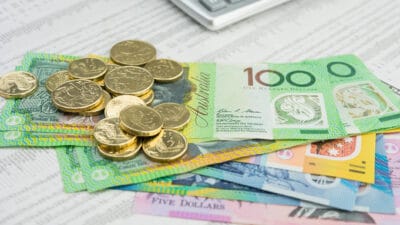The Vanguard Australian Shares Index ETF (ASX: VAS) is a popular choice on the ASX for investors seeking low-cost exposure to a broad basket of ASX shares. So much so that this exchange-traded fund (ETF) is the most popular by far in terms of funds under management out of any ASX ETF on the markets.
The Vanguard Australian Shares ETF holds the largest 300 companies on the ASX within its portfolio. Most of these are quite generous dividend payers, including the likes of Westpac Banking Corp (ASX: WBC), Telstra Group Ltd (ASX: TLS) and Transurban Group (ASX: TCL). So, investors can expect meaningful dividend income from holding VAS units.
However, because this ETF, like almost all ETFs, is structured as a trust, all dividend income it receives has to be passed on to investors almost immediately. As such, this ETF's dividend payments tend to vary from year to year, depending on what kinds of dividend payments the fund itself receives from its 300 holdings.
That stands in stark contrast to VAS's listed investment company (LIC) rivals. A LIC, such as the Australian Foundation Investment Co Ltd (ASX: AFI), is not a trust but a company. This means that, unlike an ETF, it has the ability to smooth out dividends over time.
So with that in mind, let's assess whether the VAS ETF is a good ASX choice for steady, stable and reliable dividend income.
Does the ASX's VAS ETF pay out consistent dividends?
Here's a summary of the dividend distributions that VAS's ASX investors have enjoyed over the past ten years (this ETF pays quarterly distributions, but we've annualised them for simplicity's sake):
| Calendar year | Total distribution per unit | Yield at current unit price |
| 2013 | $1.98 | 2.24% |
| 2014 | $2.75 | 3.12% |
| 2015 | $3.13 | 3.54% |
| 2016 | $2.98 | 3.37% |
| 2017 | $2.68 | 3.03% |
| 2018 | $3.52 | 3.98% |
| 2019 | $3.53 | 3.99% |
| 2020 | $1.88 | 2.13% |
| 2021 | $3.43 | 3.88% |
| 2022 | $6.36 | 7.19% |
As you can see, the Vanguard Australian Shares ETF doesn't seem to pay out a very consistent dividend stream. However, if we dig a little deeper, it is arguably more consistent than it might initially seem. There are two major outlying years here, 2020 and 2022.
The big drop in dividend distributions we saw in 2020 can be put down to the impact of the initial onset of the COVID-19 pandemic. This saw many ASX shares, including the big four banks, slash their dividends amid all of that uncertainty. But this proved temporary, with payouts surging back the following year.
Meanwhile, 2022's huge payouts came as a result of the monstrous dividends we saw from ASX miners like BHP Group Ltd (ASX: BHP) and Fortescue Metals Group Limited (ASX: FMG).
2023 hasn't concluded yet, of course. But the payments we have seen out of the VAS ETF so far this year indicate a return to the fund's average payout levels.
Should income investors avoid this fund?
By contrast, the Australian Foundation Investment Co has been far more consistent with its dividend payments. AFIC investors have received the same 24 cents per share every single year since 2016, with the exceptions of 2019 and 2023.
2019 saw the addition of an 8 cents per share special dividend, while 2023 saw the company's ordinary dividends bumped up to 25 cents per share. Right now, AFIC shares have a trailing dividend yield of 3.43%.
So while VAS's dividends have been bumpy over time, they do tend to keep to a steadily rising trend. Thus, I don't think any VAS investor today should have a problem with holding this ASX ETF as a dividend income investment.









